The Inland Taipan isn’t some cartoon villain slithering around looking for trouble. It’s real, it’s powerful, and it’s terrifyingly precise. This is the snake that scientists agree wears the crown for “most venomous in the world.” And yet… almost no one ever sees it.
It lives far from cities, in the sunbaked silence of Australia’s outback. It doesn’t want your attention — and if you’re lucky, it’ll never get yours. But when it strikes? Game over in under an hour.
Want to know what makes this reptile so deadly — and so mysterious? These ten facts will pull back the curtain on the Inland Taipan and reveal the secrets behind nature’s most venomous bite.
Venom Potency
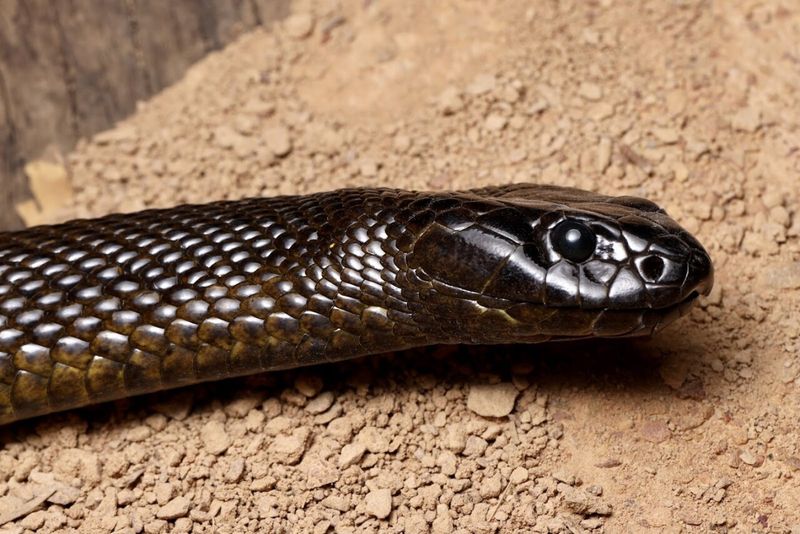
The Inland Taipan holds the title for the most venomous snake in the world. Remarkably, a single bite contains enough venom to kill around 100 adult humans.
Its venom is a highly potent neurotoxin, affecting the nervous system and coagulating the victim’s blood. Fortunately, this snake is reclusive and rarely comes into contact with people. Its shy demeanor is a blessing, as encounters are usually avoided.
The Inland Taipan’s venom has fascinated scientists, leading to significant research into antivenoms and medical applications. Despite its deadly potential, it plays a crucial role in its ecosystem.
Habitat and Range

Found primarily in the remote regions of Queensland and South Australia, the Inland Taipan thrives in cracking clay and gibber plains.
These environments offer the perfect camouflage for this master of stealth. The snake’s habitat is characterized by extreme temperature variations, requiring a highly adaptable nature. Despite its formidable reputation, the Inland Taipan’s existence is tightly linked to the preservation of its natural environment.
As human activity encroaches on these areas, conservation efforts become increasingly vital. The snake’s survival is a testament to nature’s intricacies and the balance of ecosystems.
Behavior and Temperament
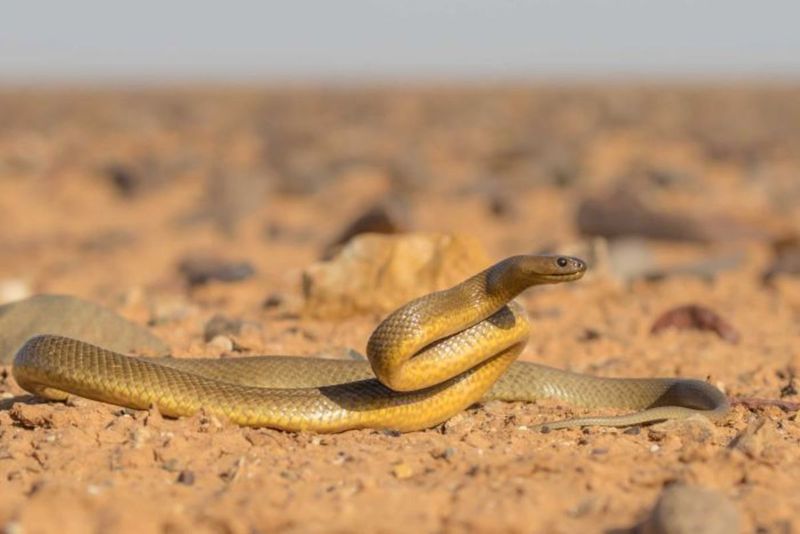
Surprisingly, the Inland Taipan is known for its docile nature. Unlike other aggressive snakes, it prefers to avoid confrontation.
When threatened, it opts for escape rather than attack. This gentle demeanor, combined with its solitary habits, minimizes human-snake interactions. Its secretive lifestyle means it is rarely seen, even by experienced herpetologists. The Inland Taipan’s preference for isolation aids its survival in the harsh Australian outback.
The snake’s temperament is a curious contrast to its lethal capabilities, making it a fascinating subject for wildlife enthusiasts and researchers.
Diet and Predation
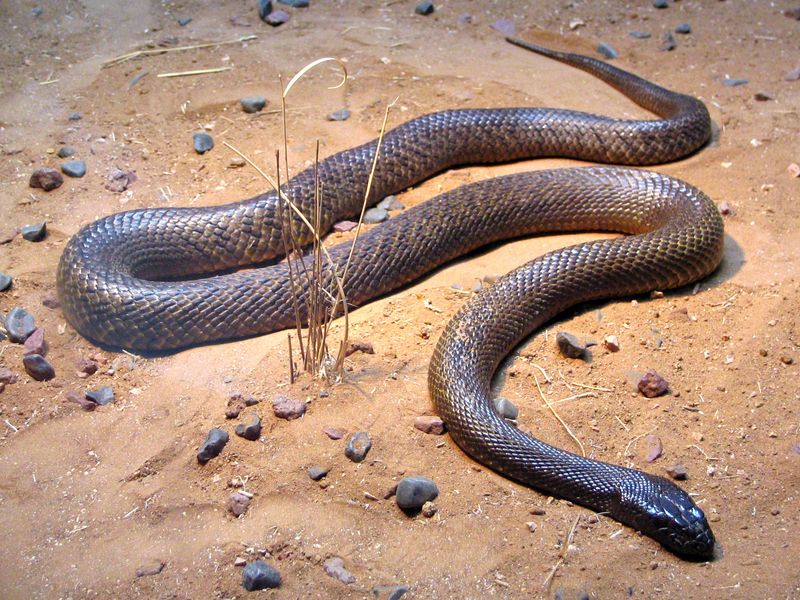
The Inland Taipan primarily preys on small mammals, especially native rodents. Its hunting technique is swift and precise, utilizing its potent venom to subdue prey quickly.
This efficiency in hunting is crucial for its survival in the sparse desert environment. The snake’s diet is a key factor in maintaining the ecological balance, controlling rodent populations in its habitat. Despite being a top predator, the Inland Taipan has its own predators, including birds of prey.
This dynamic illustrates the complex food webs in which the snake plays an integral role. Understanding its diet provides insights into ecosystem health.
Reproductive Cycle
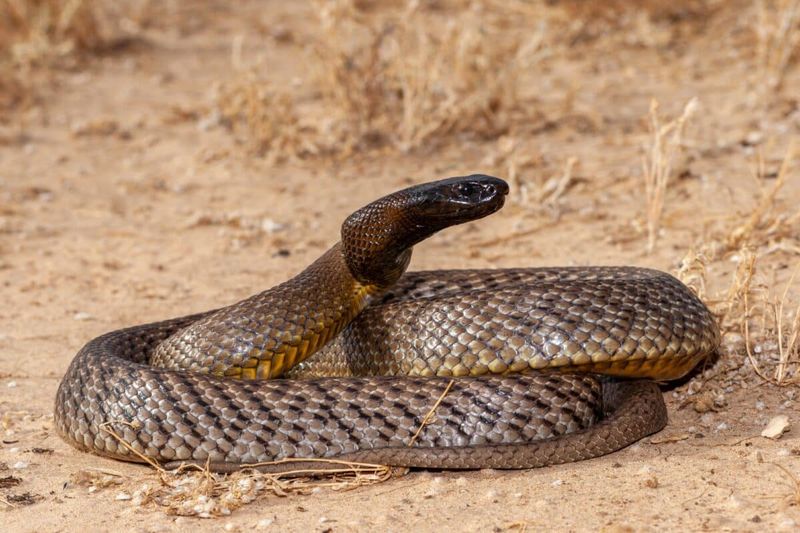
The Inland Taipan’s reproductive cycle is adapted to its environment. Breeding occurs in late winter to early spring, aligning with optimal conditions for the survival of offspring.
Females lay clutches of up to 20 eggs, which incubate for about two months. The young snakes are independent from birth, fully equipped with venom and instincts to fend for themselves. This self-sufficiency is vital in the challenging Australian outback.
The Inland Taipan’s reproductive strategies highlight the importance of timing and adaptation in the animal kingdom, ensuring species continuity despite harsh conditions.
Camouflage and Adaptation
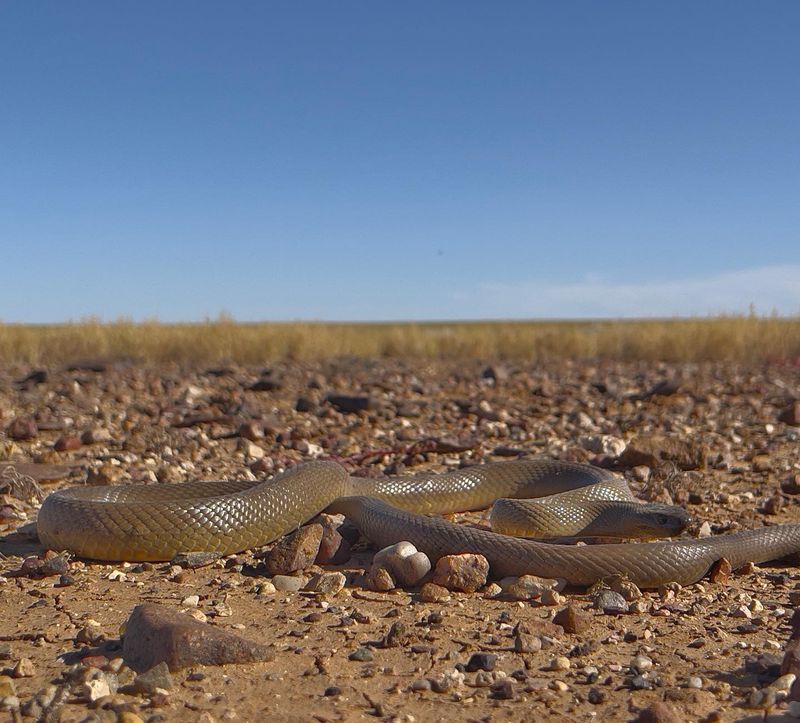
The Inland Taipan is a master of disguise, blending seamlessly into its desert surroundings. Its coloration varies from dark brown to olive, enabling it to remain undetected by both prey and predators.
This camouflage is essential for survival, as it reduces the risk of encounters with threats. The snake’s ability to adapt its coloration according to season further enhances its stealth. Such adaptations are key in the predator-prey dynamics of its habitat.
The Inland Taipan’s natural camouflage is a testament to evolutionary processes, showcasing the intricate design of life in extreme environments.
Scientific Discovery
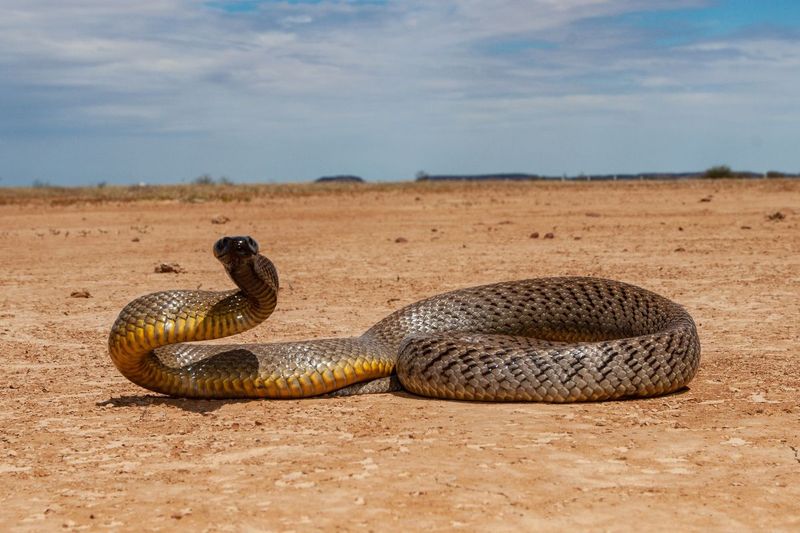
First documented in 1879, the Inland Taipan was initially classified as a separate species due to its distinct characteristics. However, it wasn’t until the 1970s that its reputation as the most venomous snake was established.
The rediscovery and subsequent studies have provided significant insights into venom toxicity and snake behavior. This snake has captivated herpetologists worldwide, inspiring numerous research publications. Such scientific exploration has broadened our understanding of venom mechanics and its potential applications in medicine.
The Inland Taipan’s discovery highlights the ever-evolving field of herpetology and the wonder of discovery.
Cultural Significance
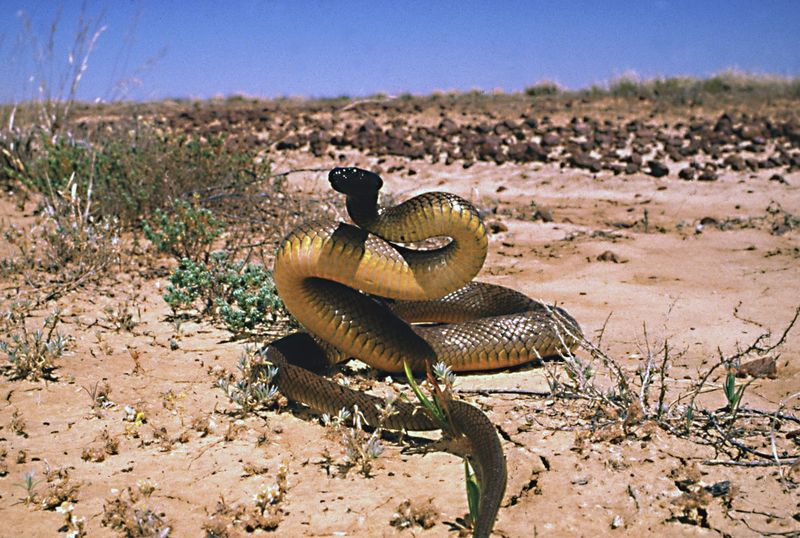
In Australian Aboriginal culture, the Inland Taipan holds a place of reverence and intrigue. Often referred to in mythological stories, it is seen as a symbol of power and mystery.
The snake’s elusive nature and deadly potential have inspired tales passed down through generations. These cultural narratives emphasize the respect and caution advised when encountering this formidable reptile.
The Inland Taipan’s cultural significance underscores the relationship between indigenous peoples and their natural environment. Through art and storytelling, the snake’s legacy continues to be an integral part of Australian cultural heritage.
Conservation Status
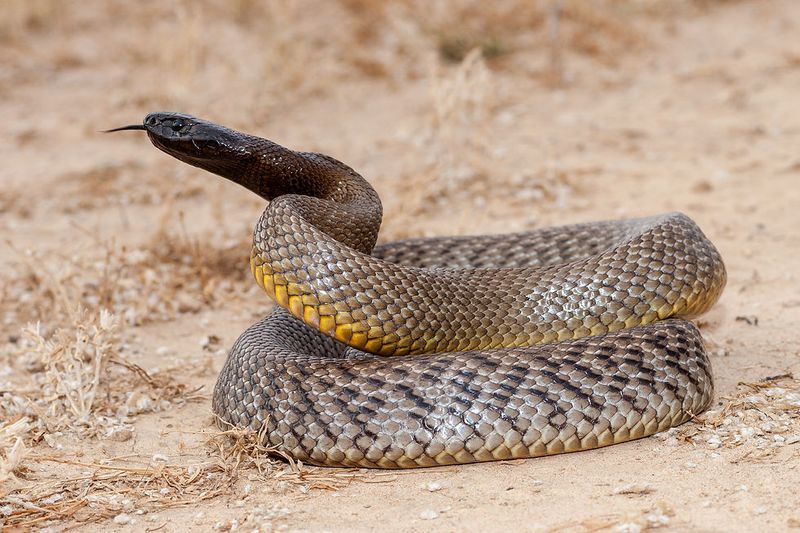
Despite its fearsome reputation, the Inland Taipan is classified as a species of “least concern” by conservationists. However, its habitat is under threat from agricultural expansion and climate change.
Conservation efforts focus on preserving its natural environment to ensure the snake’s continued survival. The Inland Taipan is an indicator species, meaning its health reflects the overall condition of its ecosystem. Protecting this snake involves safeguarding the entire habitat, which supports countless other species.
Conservationists aim to balance human needs with ecological preservation, ensuring that the Inland Taipan remains a part of Australia’s wild landscape.
Antivenom and Medical Research

The Inland Taipan’s venom, while lethal, has paved the way for advances in medical research. Antivenom specifically developed for its bite is crucial for treating potential envenomations.
The snake’s unique venom composition offers insights into new therapeutic avenues and drug development. Researchers study its components to understand how it immobilizes prey so effectively. This scientific curiosity not only enhances our knowledge of snake venom but also contributes to broader medical innovations.
The Inland Taipan’s role in medical research exemplifies the unexpected benefits of studying nature’s most dangerous creatures, turning a threat into a potential lifesaver.

